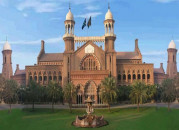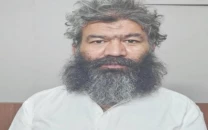HRCP’s State of Human Rights 2010 report
The work done by the HRCP shows the extent of the rot in society.

HRCP’s State of Human Rights 2010 report
The HRCP report also states that in the last calendar year, 99 members of the Ahmadi community were killed while 64 people were charged with blasphemy, out of which three were killed in police custody. But the most lives were taken by sectarian violence between Muslims as 418 people, mostly Shia, were killed in violence between different Muslim sects. Once again, the fact that the Ahmadi community is facing unparalleled discrimination, that the blasphemy laws are being misused and that Pakistan is beset by sectarian violence should not come as news to anyone, but the work done by the HRCP shows the extent of the rot in society. These are issues that have been in the news recently and the HRCP report gives some statistical basis to buttress that coverage.
It is all well and fine to discuss and be outraged by these statistics. However, it would be doing a disservice to the work put in by the HRCP not to focus on some of the more neglected human rights abuses they have documented. The province of Balochistan, as always, tends to be overlooked, both by the central government and the media. While there has been a lot of hue and cry over target killings in Karachi, the HRCP report points out that there were 117 such incidents in Balochistan. Additionally, the migration of repressed Hindus out of Balochistan, a province that once had a reputation for being friendly to minorities, has also been mentioned. It is essential to educate ourselves about these facts since the government, after announcing a much-hyped plan for bringing peace to Balochistan, seems to have put the issue to one side.
The report also uses harsh words for the structural flaws in the political system in the country. While praising the government for the passage of the 18th and 19th Amendments, it noted that legislation had become difficult to pass thanks to inaction by the Senate. Mentioning the extensive use of suo motu notice by the judiciary, the report also seemed to implicitly criticise the political parties for not taking action and thereby forcing the judiciary to take note of corruption and inefficiencies. The HRCP also pointed out that our prisons are filled to nearly double their sanctioned capacity, while the frequent use of the death penalty means that there are nearly 8,000 prisoners on death row. These point to a breakdown on almost all levels of government and society.
Women’s rights, too, seem to have taken a back seat last year. Thanks to the lethargy of the Senate, the Domestic Violence Bill was allowed to lapse while sections of the Protection of Women Act were nullified by the Federal Shariat Court. Rape and honour killings continue unpunished while women parliamentarians, who are most likely to speak out on these issues, are sidelined mainly because most of them were chosen on reserved seats.
Ultimately, the HRCP report has not made any startling disclosures. All the problems it has mentioned are those we know about and mostly chose to ignore. Its immense value lies in the meticulous research the group has done to show us exactly how bad the state of human rights in Pakistan is by giving us exact numbers.
Published in The Express Tribune, April 16th, 2011.


















COMMENTS
Comments are moderated and generally will be posted if they are on-topic and not abusive.
For more information, please see our Comments FAQ